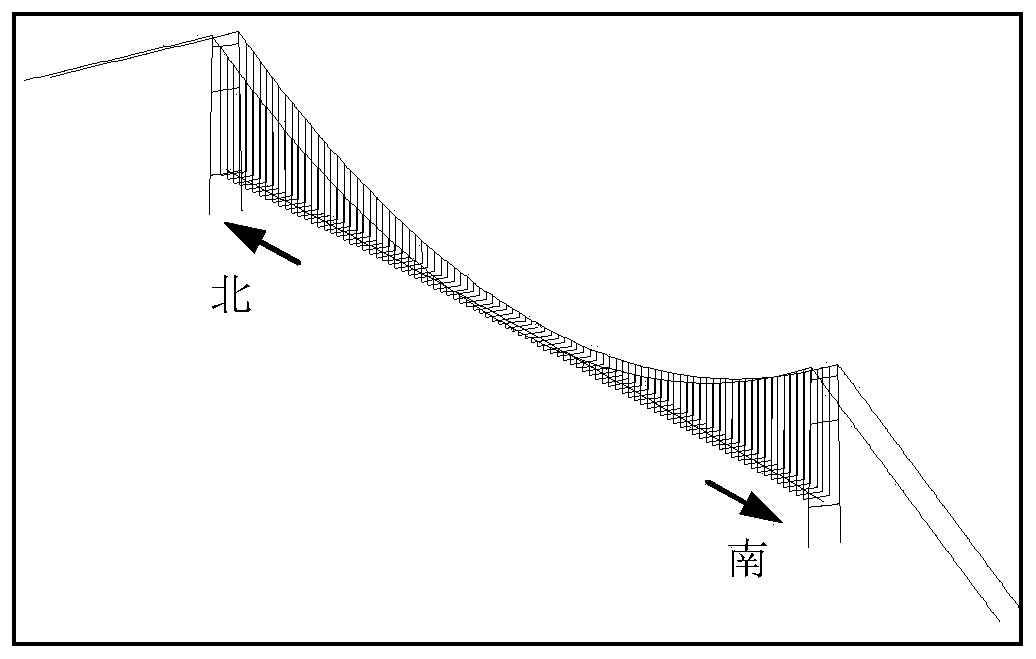A wireless sensor layout method for wind-induced vibration monitoring of bridges
A wireless sensor and wind-induced vibration technology, applied in design optimization/simulation, special data processing applications, geometric CAD, etc., can solve the problem of inability to accurately reflect the response characteristics of bridge wind-induced vibration, the inability to guarantee the connectivity of wireless sensor networks, and sensor data transmission Short distance and other issues, to achieve the effect of convenient wireless sensor layout, connectivity, and simple operation
- Summary
- Abstract
- Description
- Claims
- Application Information
AI Technical Summary
Problems solved by technology
Method used
Image
Examples
Embodiment
[0040] Such as figure 1 As shown, a wireless sensor deployment method for bridge wind-induced vibration monitoring in this embodiment includes the following steps:
[0041](1) Based on the design drawings of the bridge to be tested, the finite element model of the bridge to be tested is established using beam elements and rod elements. The positions of the optional measuring points of the bridge to be tested are consistent with the node positions of the finite element model, assuming that the total number of nodes in the finite element model is is M, then the number of optional measuring points for wind-induced vibration monitoring of the bridge under test is also M;
[0042] (2) According to the geographical location of the bridge to be tested and the bridge design code, select the wind spectrum model for the design of the bridge, and use the harmonic superposition method to simulate the wind field of the bridge site area under test. The length of the wind field sample is N;...
PUM
 Login to View More
Login to View More Abstract
Description
Claims
Application Information
 Login to View More
Login to View More - R&D
- Intellectual Property
- Life Sciences
- Materials
- Tech Scout
- Unparalleled Data Quality
- Higher Quality Content
- 60% Fewer Hallucinations
Browse by: Latest US Patents, China's latest patents, Technical Efficacy Thesaurus, Application Domain, Technology Topic, Popular Technical Reports.
© 2025 PatSnap. All rights reserved.Legal|Privacy policy|Modern Slavery Act Transparency Statement|Sitemap|About US| Contact US: help@patsnap.com



